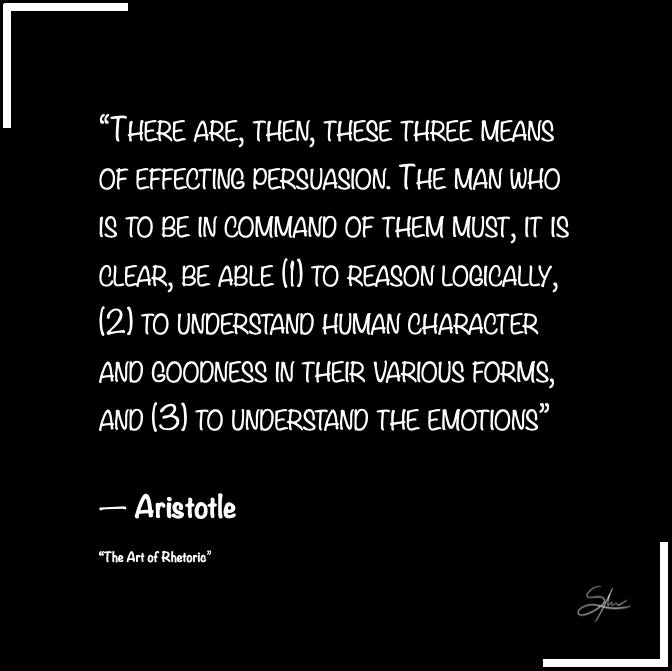Atomic Knowledge #17: Pillars of Persuasion
Command credibility, ignite emotion, prove your case, and time it right—master the art of persuasion.
⏱️ Reading Time ≈ 2 min
Aristotle’s Rhetoric outlines three (plus one) major pillars of persuasion—ethos, pathos, logos, and kairos—that enable communicators to craft messages with both depth and impact. Skillfully interwoven, these pillars not only ensure clarity and emotional resonance but also drive the audience toward immediate action. Effective persuasion, after all, goes beyond mere understanding: it urges people to do something. Ethos is rooted in the speaker’s credibility. The more reliable, honest, and competent the communicator appears, the more authority the audience will grant them. A strong ethos lays the foundation for trust, making any subsequent argument far more compelling. Pathos aims at the emotional core of the listener. By tapping into empathy, fear, excitement, or urgency, it lowers cognitive barriers and draws people closer to the speaker’s viewpoint. Vivid examples or personal stories often prove powerful in sparking emotional responses. Logos appeals to logic and reason, focusing on data, evidence, and structured arguments. Facts and figures, when well-presented, validate the speaker’s claims and persuade the rational mind. Kairos highlights the power of seizing the opportune moment. Although it is an exogenous factor—something not entirely within the speaker’s control—it can act as a multiplier of persuasion by amplifying a message’s impact and reach if used strategically. Conversely, neglecting the right context or timing can flatten the effect of even the most compelling argument.
Example: picture an environmental activist who, leveraging scientific credibility (ethos), lays out alarming climate statistics (logos) at a prominent conference. They deepen the emotional pull (pathos) by recounting firsthand stories of flood-ravaged communities, and choose to do so when media coverage of a recent natural disaster is at its peak (kairos). They harnessed credibility, emotion, reason, and timing to speak to both the mind and the heart—exactly when it mattered most.
Skillfully mastering these four modes of persuasion grants you the power to deliver impactful messages—and the insight to shield yourself from manipulation.
👋🏼 Make the most of it! Until next time, S.
Previously on Atomic Knowledge
Whenever I encounter an interesting concept—whether it’s a theory, speculative idea, formula, or law—I strive to deeply understand it and see how it connects within my knowledge network. Once I’ve grasped its essence, I distill it into a concise, no-frills note: simple, atomic, and memorable. To keep things sharp and focused, I stick to a “lazy” limit of 1,500 characters, give or take. These atomic notes, often described as mental models, have revolutionized how I understand and link ideas, fostering a more organic and interconnected expertise. Believing in the power of sharing, I’ve decided to make them public. Think of these notes as tools: mental models to keep in your back pocket for quick use or prompts to deepen your understanding when inspiration strikes. Subscribe if you’re curious—you won’t want to miss them.










